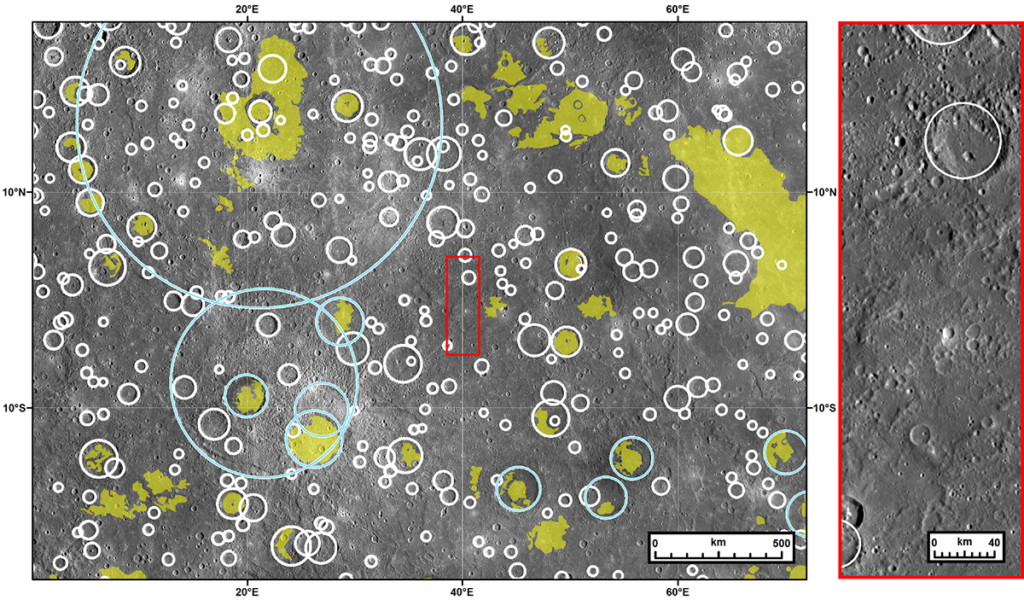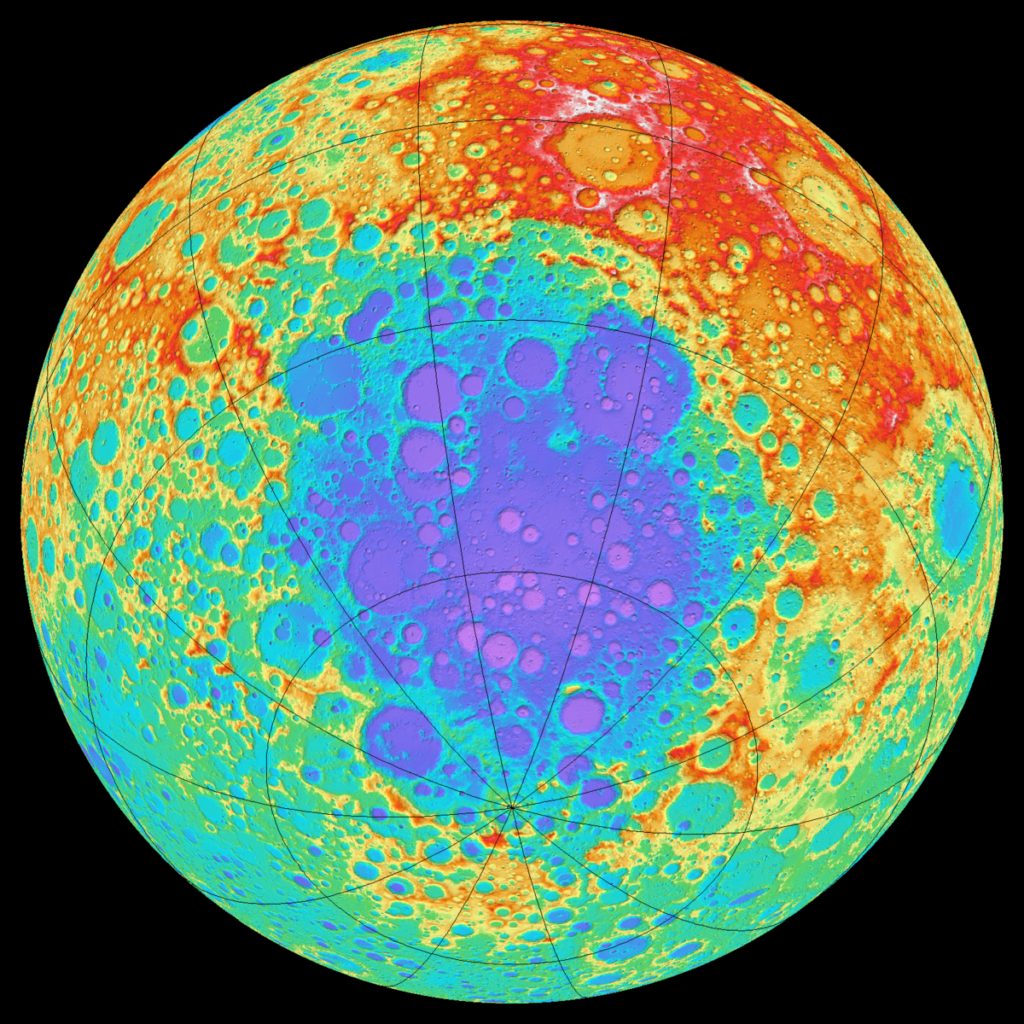Characterizing the contribution of volcanic and impact cratering processes. On Mercury, the high average impact velocities are conducive to the production of large volumes of impact melt, much of which is ejected and deposited beyond the crater cavity. The potential predominance of impact melt, especially from larger impact craters (100-200 km in diameter), indicates that impact ejecta may play a more important role in local and regional resurfacing across the surface of Mercury than previously recognized. We are producing a map of the Derain Quadrangle to determine the relative contribution of each surfacing process.

Derain Quadrangle on Mercury. Smooth Plains are shown in yellow. MESSENGER MDIS base map.
Extent of ancient lunar volcanism. Cryptomare are ancient volcanism deposits on the Moon that are obscured from view. Most of these ancient volcanic materials have been covered with ejecta materials with feldspathic (highland) composition. The distribution of these materials reveals where the earliest preserved volcanism eruptions occurred. In this study, we target the South Pole-Aitken basin, interpreted to be the earliest impact basin on the Moon, to map the extent of cryptomare and further characterize the surface properties of these materials, including mineralogy and roughness.

Elevation data showing the South Pole-Aiken basin in cooler colors. LROC WAC DTM GLD100.



